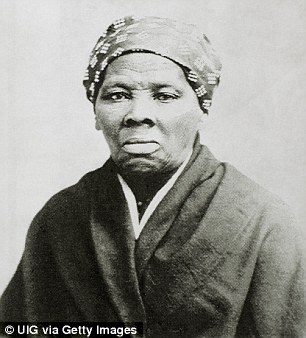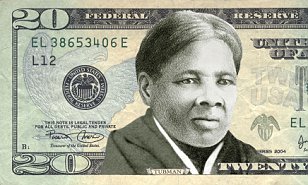Escaped Black Slave Harriet Tubman To Become First Woman On American Dollar Bill(Photos )
Black abolitionist, Harriet Tubman will appear on front of the $20 bill, replacing former President Andrew Jackson and becoming the first woman featured on United States paper currency in modern times, a Treasury official said in deciding to leave Alexander Hamilton on the $10 note.
Tubman, a woman who escaped slavery only to risk her life by returning to the South to lead others to freedom on the Underground Railroad, will replace Andrew Jackson, the nation’s seventh president, on the $20 bill.
The decision is the latest chapter in a 10-month-old controversy that erupted after Treasury Secretary Jacob J. Lew tried to address gender imbalance on US currency notes.
He opened up the selection process to the public just as the current face on the $10 bill was enjoying a resurgence in popularity, and outrage ensued.
The move Lew is announcing Wednesday is intended as a way to thread the needle between women’s groups who have been advocating for gender diversity on U.S. currency and fans of Hamilton, including Lin-Manuel Miranda, the playwright and star of the hit Broadway musical about the nation’s first Treasury secretary. Miranda lobbied Lew to keep Hamilton on the $10 when he visited Washington last month.

Brief biography of Harriet Tubman
Harriet Tubman was an American bondwoman who escaped from slavery in the South to become a leading abolitionist before the American Civil War. She was born in Maryland in 1820, and successfully escaped in 1849. Yet she returned many times to rescue both family members and non-relatives from the plantation system. She led hundreds to freedom in the North as the most famous “conductor” on the Underground Railroad, an elaborate secret network of safe houses organized for that purpose.
Early Life
Harriet Tubman was born to enslaved parents in Dorchester County, Maryland, and originally named Araminta Harriet Ross. Her mother, Harriet “Rit” Green, was owned by Mary Pattison Brodess. Her father, Ben Ross, was owned by Anthony Thompson, who eventually married Mary Brodess. Araminta, or “Minty,” was one of nine children born to Rit and Ben between 1808 and 1832. While the year of Araminta’s birth is unknown, it probably occurred between 1820 and 1825.
Minty’s early life was full of hardship. Mary Brodess’ son Edward sold three of her sisters to distant plantations, severing the family. When a trader from Georgia approached Brodess about buying Rit’s youngest son, Moses, Rit successfully resisted the further fracturing of her family, setting a powerful example for her young daughter.
Physical violence was a part of daily life for Tubman and her family. The violence she suffered early in life caused permanent physical injuries. Harriet later recounted a particular day when she was lashed five times before breakfast. She carried the scars for the rest of her life. The most severe injury occurred when Tubman was an adolescent. Sent to a dry-goods store for supplies, she encountered a slave who had left the fields without permission. The man’s overseer demanded that Tubman help restrain the runaway. When Harriet refused, the overseer threw a two-pound weight that struck her in the head. Tubman endured seizures, severe headaches and narcoleptic episodes for the rest of her life. She also experienced intense dream states, which she classified as religious experiences.
The line between freedom and slavery was hazy for Tubman and her family. Harriet Tubman’s father, Ben, was freed from slavery at the age of 45, as stipulated in the will of a previous owner. Nonetheless, Ben had few options but to continue working as a timber estimator and foreman for his former owners. Although similar manumission stipulations applied to Rit and her children, the individuals who owned the family chose not to free them. Despite his free status, Ben had little power to challenge their decision.
By the time Harriet reached adulthood, around half of the African-American people on the eastern shore of Maryland were free. It was not unusual for a family to include both free and enslaved people, as did Tubman’s immediate family. In 1844, Harriet married a free black man named John Tubman. Little is known about John Tubman or his marriage to Harriet. Any children they might have had would have been considered enslaved, since the mother’s status dictated that of any offspring. Araminta changed her name to Harriet around the time of her marriage, possibly to honor her mother.
Escape from Slavery and Abolitionism
Harriet Tubman escaped from slavery in 1849, fleeing to Philadelphia. Tubman decided to escape following a bout of illness and the death of her owner in 1849. Tubman feared that her family would be further severed, and feared for own her fate as a sickly slave of low economic value. She initially left Maryland with two of her brothers, Ben and Henry, on September 17, 1849. A notice published in the Cambridge Democrat offered a $300 reward for the return of Araminta (Minty), Harry and Ben. Once they had left, Tubman’s brothers had second thoughts and returned to the plantation. Harriet had no plans to remain in bondage. Seeing her brothers safely home, she soon set off alone for Pennsylvania.
Tubman made use of the network known as the Underground Railroad to travel nearly 90 miles to Philadelphia. She crossed into the free state of Pennsylvania with a feeling of relief and awe, and recalled later: “
When I found I had crossed that line, I looked at my hands to see if I was the same person. There was such a glory over everything; the sun came like gold through the trees, and over the fields, and I felt like I was in Heaven.”
Rather than remaining in the safety of the North, Tubman made it her mission to rescue her family and others living in slavery. In December 1850, Tubman received a warning that her niece Kessiah was going to be sold, along with her two young children. Kessiah’s husband, a free black man named John Bowley, made the winning bid for his wife at an auction in Baltimore. Harriet then helped the entire family make the journey to Philadelphia. This was the first of many trips by Tubman, who earned the nickname “Moses” for her leadership. Over time, she was able to guide her parents, several siblings and about 60 others to freedom. One family member who declined to make the journey was Harriet’s husband, John, who preferred to stay in Maryland with his new wife.
The dynamics of escaping slavery changed in 1850, with the passage of the Fugitive Slave Law. This law stated that escaped slaves could be captured in the North and returned to slavery, leading to the abduction of former slaves and free blacks living in Free States. Law enforcement officials in the North were compelled to aid in the capture of slaves, regardless of their personal principles. In response to the law, Tubman re-routed the Underground Railroad to Canada, which prohibited slavery categorically.
In December 1851, Tubman guided a group of 11 fugitives northward. There is evidence to suggest that the party stopped at the home of abolitionist and former slave Frederick Douglass.
In April 1858, Tubman was introduced to the abolitionist John Brown, who advocated the use of violence to disrupt and destroy the institution of slavery. Tubman shared Brown’s goals and at least tolerated his methods. Tubman claimed to have had a prophetic vision of Brown before they met. When Brown began recruiting supporters for an attack on slaveholders at Harper’s Ferry, he turned to “General Tubman” for help. After Brown’s subsequent execution, Tubman praised him as a martyr.
Harriet Tubman remained active during the Civil War. Working for the Union Army as a cook and nurse, Tubman quickly became an armed scout and spy. The first woman to lead an armed expedition in the war, she guided the Combahee River Raid, which liberated more than 700 slaves in South Carolina.
Wow! Great woman.
Credits: Biography.com


Wow,
This is nice
She’s indeed a great woman and shame on that her selfish and timid husband.
I have a dream by martin luther king s nw bcomin a reality..
First it was obama bcomin d president of American…now a slave..
I LOVE AFRICA…
AFRICA IS MY MOTHERLAND
I can see women empowerment has gotten to a whole new level….
Manny the long lost MDB’er